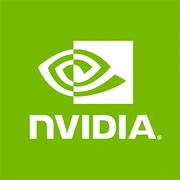NVIDIA GeForce RTX 4060 Mobile

NVIDIA GeForce RTX 4060 Mobile: Power and Efficiency in a Mobile Format
April 2025
Modern mobile graphics cards have long ceased to be a compromise between performance and portability. The NVIDIA GeForce RTX 4060 Mobile is a striking example of how engineers have managed to package cutting-edge technology into a compact form factor. In this article, we will explore what makes this model noteworthy, how it performs in gaming and professional tasks, and who should pay attention to it.
1. Architecture and Key Features: Ada Lovelace and AI Acceleration
The RTX 4060 Mobile graphics card is built on the Ada Lovelace architecture, which debuted in 2022. The chips are manufactured using 4nm TSMC technology, providing high transistor density and energy efficiency. Key features include:
- DLSS 3.5 — AI upscaling technology that boosts FPS even at 4K by "reconstructing" frames with neural networks.
- Third-generation ray tracing — improved RT cores that are 50% more efficient than those in the RTX 30 series.
- Support for DirectX 12 Ultimate and Vulkan RT — full compatibility with modern APIs.
- NVIDIA Reflex — reduced latency in esports titles.
Despite its mobile format, the RTX 4060 Mobile retains all the "features" of desktop counterparts, including hardware support for AV1 video encoding.
2. Memory: GDDR6 and Bandwidth
The card is equipped with 8 GB of GDDR6 memory with a 128-bit bus. The bandwidth reaches 256 GB/s thanks to a memory speed of 16 Gbps. This is sufficient for comfortable gaming at resolutions up to 1440p, but limitations may arise at 4K due to VRAM capacity. For instance, in games like Starfield or Cyberpunk 2077: Phantom Liberty, at ultra settings, the memory usage can reach 90-95%, occasionally leading to micro-stutters.
For most tasks, 8 GB is adequate, but creative professionals working with heavy 3D scenes should consider models with 12 GB.
3. Gaming Performance: FPS, Resolutions, and RTX
The RTX 4060 Mobile is positioned as a solution for 1080p and 1440p. Here are examples of average performance in current games of 2025 (Ultra settings, without DLSS):
- Cyberpunk 2077: 58 FPS (1080p), 42 FPS (1440p), 28 FPS (4K).
- Call of Duty: Black Ops 6: 92 FPS (1080p), 68 FPS (1440p).
- Horizon Forbidden West PC Edition: 75 FPS (1080p), 54 FPS (1440p).
With DLSS 3.5 in "Quality" mode, the performance boost ranges from 30-50%. For example, in Cyberpunk 2077 with ray tracing and DLSS, the frame rate rises to 65 FPS at 1440p. For 4K gaming, the card is only suitable with DLSS or FSR 3.0 (AMD technology compatibility exists, but with lower efficiency).
4. Professional Tasks: CUDA, Rendering, and Editing
Thanks to 3072 CUDA cores and support for NVIDIA Studio Drivers, the RTX 4060 Mobile excels not only in gaming:
- Video Editing: In Adobe Premiere Pro, 4K video rendering in H.265 is accelerated by 40% compared to the RTX 3060 Mobile.
- 3D Modeling: In Blender, rendering a scene in Cycles completes in 12 minutes (versus 18 minutes for the previous generation).
- Machine Learning: Support for CUDA and TensorFlow libraries makes the card suitable for training small neural networks.
However, for complex simulations (e.g., in Ansys), it’s better to opt for models with larger memory capacity.
5. Power Consumption and Thermal Output: TDP and Cooling
The TDP of the RTX 4060 Mobile is 85-100 W, depending on the operating mode (Dynamic Boost 2.0 temporarily increases power to 115 W). This requires an efficient cooling system:
- Laptops with 2-3 heat pipes and anti-vibration fan mounts are recommended (e.g., ASUS ROG Zephyrus or Lenovo Legion Pro).
- Under prolonged loads, the core temperature stays around 75-82°C — a safe but noisy range.
To reduce heat, you can use FPS limiting through the NVIDIA Control Panel or third-party utilities.
6. Comparison with Competitors: AMD and Intel
The main competitors in 2025 are:
- AMD Radeon RX 7600M XT (8 GB GDDR6): $100 cheaper, but lags by 15-20% in ray tracing. FSR 3.0 does not match DLSS 3.5 in image quality.
- Intel Arc A770M (12 GB GDDR6): Performs better in 4K, but drivers are still less stable, especially in older games.
The RTX 4060 Mobile wins due to its ecosystem: DLSS, Reflex, and Broadcast utilities for streamers.
7. Practical Tips: Selection and Configuration
- Laptop Power Supply: Minimum 180 W for models with Intel Core i7 or Ryzen 7 processors.
- Compatibility: The card operates on PCIe 4.0 x8 — check if your laptop supports this version.
- Drivers: Regularly update through GeForce Experience. For professional tasks, switch to Studio Drivers.
Avoid thin ultrabooks with passive cooling — they throttle quickly under load.
8. Pros and Cons
Pros:
- High FPS in 1080p/1440p with DLSS.
- Support for all current AI technologies.
- Energy efficiency for a mobile GPU.
Cons:
- 8 GB of VRAM limits 4K gaming.
- Laptop prices start from $1200 (the card itself is not available in OEM supply).
9. Final Conclusion: Who is the RTX 4060 Mobile Suitable For?
This graphics card is an ideal choice for:
- Gamers who want to play AAA titles on high settings without being tethered to a wall socket.
- Content creators who need accelerated rendering and work with AI tools.
- Students and professionals looking for a balance between performance and portability.
If your budget is limited and 4K is not a priority, the RTX 4060 Mobile will be a reliable companion for the next 3-4 years. However, for future projects focused on RTX and 8K, consider models with 12-16 GB of memory.
Basic
Memory Specifications
Theoretical Performance
Miscellaneous
Benchmarks
Compared to Other GPU
Related GPU Comparisons
Share in social media
Or Link To Us
<a href="https://cputronic.com/gpu/nvidia-geforce-rtx-4060-mobile" target="_blank">NVIDIA GeForce RTX 4060 Mobile</a>
